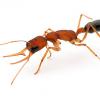I think it’s unfair to compare Solenopsis invicta and Tetramorium immigrans. Both are invasive, but there’s really no comparison in terms of environmental destruction.
Keeping a non-native ant *in your house* is really no different than keeping a non-native house plant. It may actually be preferable to catch and remove non-native queens from the local breeding pool. The caveat is that you should not release or move around any invasive species by any means.
For example, I despise English Ivy because it chokes and kills the native trees in my region leaving behind a barren monoculture. I adore the pretty white and green ivy that I have growing in my office, though.
Edited by ANTdrew, December 15 2019 - 5:43 PM.
"The ants are a people not strong, yet they prepare their meat in the summer." Prov. 30:25
Keep ordinary ants in extraordinary ways.


















